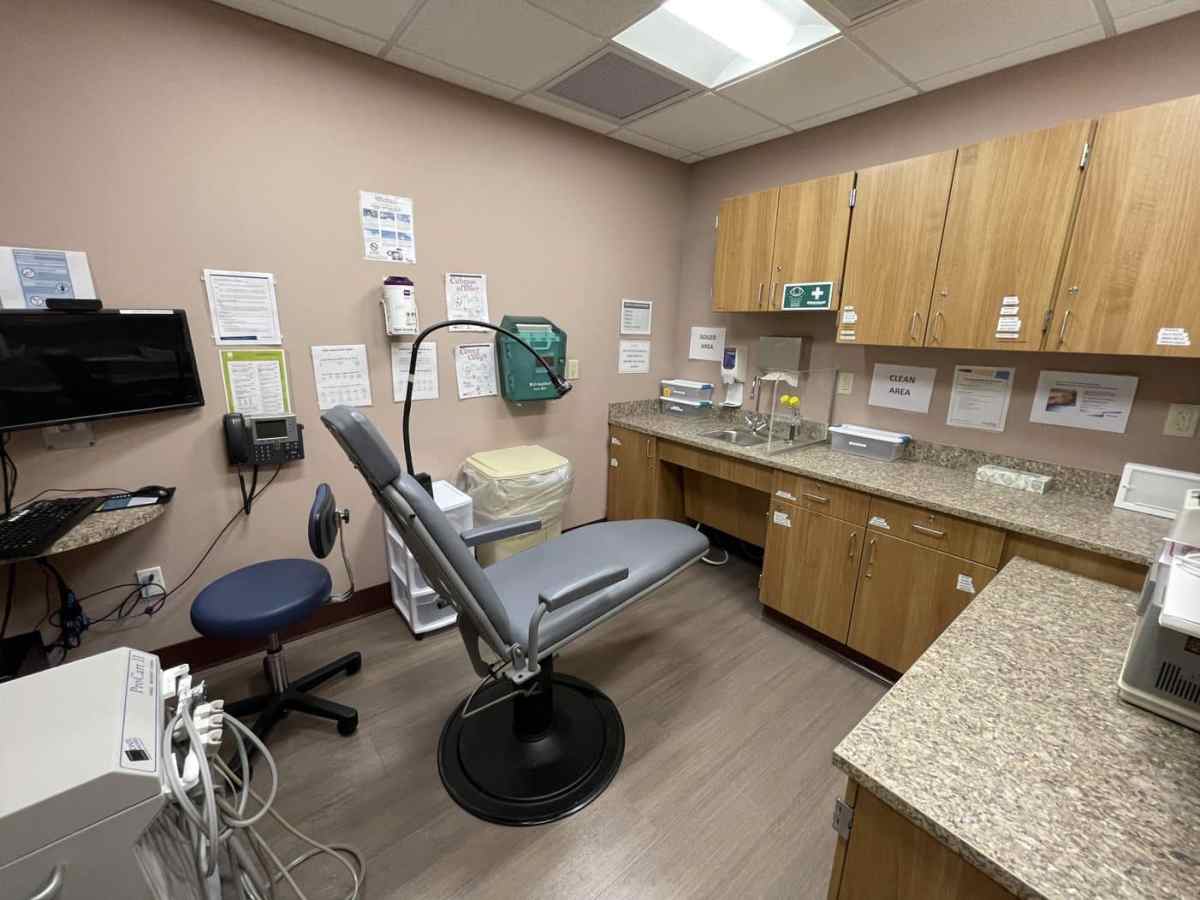The Montefiore School Health Program (MSHP) is piloting a model of serving young people’s health care needs at clinics in their school buildings. The program currently has 32 on-campus clinics serving 99 Department of Education (DOE) schools throughout the Bronx, covering medical, vision, dental and mental/behavioral health for students in elementary through high school.
The on-campus dentist at I.S. 174 is Dr. Miguel Ortiz, originally from Puerto Rico. About 75% of his patients speak Spanish, he said, so he’s able to treat and educate even more young people without the problem of a language barrier.
But Ortiz doesn’t just look out for students’ dental health, he also educates them on factors that contribute to childhood obesity. For instance, students may not understand how sugary drinks or acidic foods can damage their teeth and their overall health.
According to the Centers for Disease Control and Prevention (CDC), childhood obesity (ages 2 to 19) worsened during the COVID-19 pandemic due to disrupted routines, increased stress and fewer opportunities for sports and activities. A 2021 CDC study of over 400,000 young people found that the prevalence of obesity increased about three percentage points compared to pre-pandemic levels.
I.S. 174 was no exception. When students returned to school following the height of the pandemic, building staff saw a spike in unhealthy weight among its students — combined with increased food insecurity, said Rivera-Edwards. Even working families were struggling with high prices at the grocery stores. To that end, MSHP has distributed about 38,000 pounds of healthy food to families in the Bronx schools it serves.
The goal is to “try to change what [students] are putting in their mouth,” Ortiz said — and to make those changes seem doable by reinforcing the same good habits in his office and in classes.
Since September 2023, 240 students have received nutrition and health counseling along with their dental care at the I.S. 174 clinic. And with MHSP also conducting nutrition workshops in classrooms, the message often does sink in. Even “small, incremental changes” can make a difference in students’ overall health, said Rivera-Edwards.
But overcoming perceptions is part of the battle too. Many young people view dental care as a luxury or cosmetic service — not a necessity. This has been a problem “since forever,” said Ortiz.
“They saw dentists like something privileged,” he said. “They don’t think it’s part of the whole health system.”
That’s why the ease and accessibility of in-school clinics is appealing to students and parents. Any student enrolled in the school can make an appointment with Ortiz, whether they have dental insurance or not.
Serving everyone in a convenient location — regardless of insurance, immigration status or other potential barriers — is key to the program’s success, as those who make the first appointment tend to come back consistently, said Rivera-Edwards.
Students are often “impressed” to realize that they have excellent dental care in their own school, said Ortiz. He can do all routine services including cleaning and sealants, and for more complex cases, he makes referrals to other Montefiore clinics. Even in the nontraditional setting, all patients at I.S. 174 get high-quality treatment, said Ortiz.
MSHP is looking to expand to more schools in the coming year.
“The way we are working is the best of the best,” said Dr. Ortiz.




